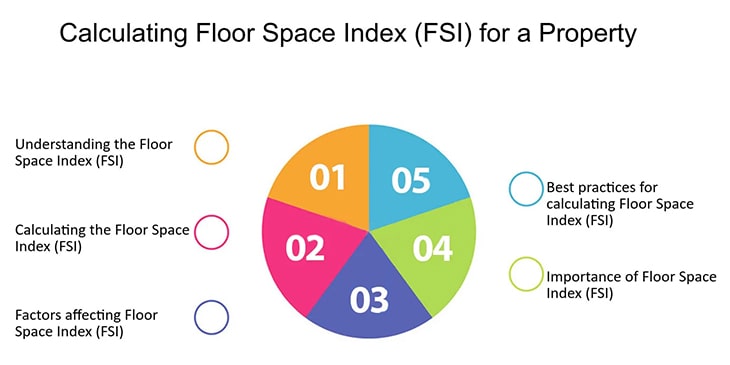
Register here and Avail the Best Offers!!
 +91-999 9111 100
+91-999 9111 100 
 By Buniyad
By Buniyad 03/27/2024
Embarking on property investment is a transformative decision with enduring financial implications. However, the intricacies of the real estate realm can be overwhelming, potentially causing you to overlook critical details. Let’s delve into the importance of Floor Space Index (FSI), its calculation, and its relevance to property investment. Navigating the real estate process, whether acquiring an apartment, purchasing land, or constructing a house, necessitates a grasp of numerous rules and regulations. Familiarizing yourself with industry concepts, terms, and abbreviations can render this seemingly daunting process more manageable.
FSI, or Floor Space Index, also referred to as Floor Area Ratio (FAR), stands as a fundamental term in real estate. It surfaces during property transactions and bears immense importance. In straightforward terms, FSI denotes the maximum allowable floor area a developer can construct on a specific piece of land. It represents the ratio of the built-up area of a building to the total land area and varies based on regulations set by the city’s governing administration.
Urban Planning: FSI plays a pivotal role in urban planning by regulating building density, ensuring a balance between infrastructure, population density, and open spaces.
Zoning Compliance: FSI defines zoning regulations and land use, ensuring development aligns with intended purposes like residential, commercial, or industrial zones.
Infrastructure Load: Proper FSI management prevents undue strain on resources such as water, electricity, and transportation, benefiting urban infrastructure.
Aesthetics and Environment: FSI contributes to a city’s aesthetics and environment, resulting in well-designed neighborhoods with adequate green spaces.
Property Valuation: FSI influences property values, potentially increasing them in areas with more development potential.
Developer’s Guide: FSI guides developers on the maximum building size permissible, aiding efficient space utilization while adhering to regulations.
Plot Size: The size of the plot determines the potential FSI.
Type of Building: Different building types (residential, commercial, etc.) have varying FSI allowances.
Location: FSI can differ between established and developing areas.
City Regulations: City-specific laws and by-laws dictate what is included in FSI calculations.
Calculating actual FSI can be intricate due to the inclusion or exclusion of areas like basements, porches, lifts, etc., based on city regulations. Thoroughly researching local laws is vital.
Investing in a property is a milestone that demands careful consideration. Given the substantial financial commitment and long-term nature of property ownership, it’s crucial to comprehend factors like FSI. Educate yourself to make informed decisions and safeguard your investment.
Also Read: Living Luxuriously: Exclusive Areas in Delhi for 2023

Noida has today grown into one of […]

A Power of Attorney in India is […]

The Yamuna Expressway is not just a […]

With multiple completed and numerous ongoing infrastructural […]

Property registration is an important step in […]

Property valuation is a crucial process that […]

Real Estate is more than just buying […]

Many factors go into shaping how – […]
Buniyad Blog is proudly powered by WordPress
Head Office
G-57/58 , Buniyad Chowk, Sector-18, Noida Uttar Pradesh
+91-999-9111-110Greater Noida
S.L. TOWER 1ST FLOOR, ALFA COMMERCIAL BELT, Noida Uttar Pradesh
+91-020-42040004South Delhi
A-32, First Floor, Feroz Gandhi Rd, Lajpat Nagar-II,New Delhi.
+91-11-41006000Gurugram
JMD REGENT SQUARE GF-11 M.G. ROAD,Gurugram 122001
+91-124-4313200